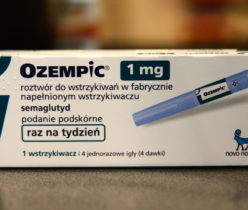Advertisement
Newsletter
Where these drugs might take us — and what that means for medicine.
I’ve covered Ozempic and similar drugs since 2022.
In the past two years, Ozempic has become a synonym for weight loss. When celebrities slimmed down, tabloids wondered whether they were taking the drug. Activists argued that the drug entrenched old norms about body image — people still seemed to want to be thin. Ozempic was weight loss; weight loss was Ozempic. It’s like Kleenex or Scotch tape: totemic.
Technically, while Ozempic is a diabetes drug, people can, and do, take it to drop weight.
But the drug — and others in its class, such as Wegovy, Mounjaro and Zepbound — is about much more. Scientists believe the drugs are about to revolutionize several fields of medicine, such as cardiology and endocrinology. Researchers are also running dozens of trials to see whether they might help with Alzheimer’s, liver disease, polycystic ovary syndrome and even skin conditions. If these trials prove successful, the drugs may extend many lives by years, save billions in medical costs and divide public health into before-and-after epochs. A researcher studying these drugs told me he felt like the scientist who first discovered antibiotics.
Those are some sky-high hopes, and not all will be come true. But we’ve already seen a real-world impact. In March, the Food and Drug Administration said that doctors could use Wegovy to reduce the risk of heart problems. Last month, a trial showed that the compound in Ozempic reduced the risk of complications from chronic kidney disease. And last week, two trials found that tirzepatide, the substance in Mounjaro and Zepbound, could improve symptoms of sleep apnea.
The idea that a single drug that could target so many kinds of disease might sound too good to be true. These drugs, called GLP-1s (glucagon-like peptide 1 receptor agonists), mystify even the scientists who study them. When I asked researchers how it was possible that Ozempic might help with cognitive issues and nonalcoholic fatty liver disease and opioid addiction, they gave the same answer: We don’t know!
But we have early clues about where these drugs might take us — and what that means for medicine. In today’s newsletter, I’ll explain.
We are having trouble retrieving the article content.
Please enable JavaScript in your browser settings.
Thank you for your patience while we verify access. If you are in Reader mode please exit and log into your Times account, or subscribe for all of The Times.
Thank you for your patience while we verify access.
Already a subscriber? Log in.
Want all of The Times? Subscribe.
Advertisement

